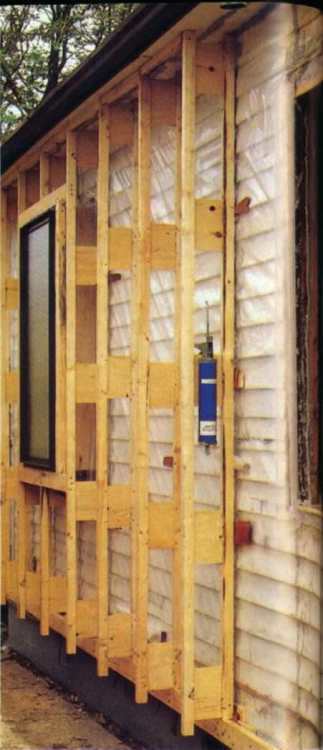-
Posts
4213 -
Joined
-
Last visited
-
Days Won
29
Iceverge last won the day on April 14
Iceverge had the most liked content!
Personal Information
-
Location
Ireland
Recent Profile Visitors
7639 profile views
Iceverge's Achievements

Advanced Member (5/5)
1.8k
Reputation
-
Looks like the party is over....
Iceverge replied to Beelbeebub's topic in Air Source Heat Pumps (ASHP)
My day job isn't climbing scaffold or screeding concrete so barring any disastrous health problems I expect I could do it until at least then. -
Looks like the party is over....
Iceverge replied to Beelbeebub's topic in Air Source Heat Pumps (ASHP)
At brief glance I reckon they're inline with most other European economies? Exemptions being the Nordics with good hydro and nuclear and Hungary and Turkey with government price controls? On the other hand I think private enterprise short termism is a bad fit for vital public services like transport, energy, water etc . The likes of EDF and Thames Water should be trading only in decades long bonds to force them to take a long view rather than normal shares and dividends. -
Looks like the party is over....
Iceverge replied to Beelbeebub's topic in Air Source Heat Pumps (ASHP)
It's an issue. In the UK 60 years ago there was 4 workers for every pensioner. It's closer to 3 now. In the 1960s pensioners were 6% of the voters, now they're closer to 18%. Policy is following the votes. Underspending on new housing, infrastructure, energy and education in favour of protecting homeowner tax breaks, pension protection and old age healthcare. These policies aren't economical productive so the county is suffering. Retirement should be raised to 75 years old to match the 1960's ratios or this problem will deepen. -
Looks like the party is over....
Iceverge replied to Beelbeebub's topic in Air Source Heat Pumps (ASHP)
Grants typically just shove up prices. A progressive carbon tax would have been better money than any grants in my opinion. And government to get out of the way. For example a blanket planning (and listed building ) exemption to any house changes reducing its energy use. Triple Glazing, EWI, ASHP, solar etc etc. -
Insulating 45 degree internal ceiling returns in loft space
Iceverge replied to jc212's topic in Heat Insulation
72.5mm insulated plasterboard chamfered top and bottom and screwed through the existing plasterboard into the rafters. Foam either a good low expansion foam, tape and skim the joints to wall and ceiling. Don't bother taking down the existing plasterboard. No space gain in the room and will create an enormous mess. -
The roof will be able to dry inwards. I would just tape the OSB for airtightness and leave it at that. You could sandwich a VCL between the OSB and PIR but it's unnecessary in my view.
-
Insulating a shed for laundry room?
Iceverge replied to flanagaj's topic in General Self Build & DIY Discussion
For not an awful lot more cash you could have an insulated metal panel shed. Or if you want plug and play... Should be saleable in years to come or it'd be easy enough to tart up if you didn't want to be continuously reminded of choc ices! -
Just tape the OSB for airtightness and forget the YBS. Insulate the service cavity with mineral wool. Ideally run the battens at 90deg to the rafters.
-
There's no magic with dMev Vs PIV. Both are just a method of moving a continuous stream of air through the house. I used to leave the hob extractor on when I went out in an old damp rental cottage we had to dry the place out. It's just a fan moving air after all. In both cases you'll still get condensation if you have trapped pockets of air like behind curtains etc. @TakeshiKovacs as an experiment try leaving a bedroom door open to the hallway, curtains open and the bathroom/kitchen extractor fan on constantly for a night. If you can manage the light and noise. It'll solve the condensation I bet. You could also crack the window open a few mm and leave an air gap to allow some air flow through the bedroom to the extractor. Keep us posted.
-
Masking tape along the perimeter would avoid the need to scrape it from the floor too.
-
Fine tuning my IWI Solid wall (Warm Batten) design
Iceverge replied to Annker's topic in Heat Insulation
What is under the timber floor? Has this change only come about since you applied the parge coat? -
You could do a hybrid roof too, Or maybe SIPS depending on your span. Both work and reduce the thickness of the roof substantially.
-
Using the chimney to vent the underfloor isn't a good idea thermally. As Nick says it'll cool the house 24/7. Forget rigid boards, impossible to put in there properly. Instead make some Larsen truss type joist extenders with flanges on bottom to tack to the side of the existing joists. If you could rip a 300mm I-joist in half it would be perfect. The OSB webs will be plenty thermal break. Imaging something like these hanging from below your existing joists. Drop in hardboard to sit on top of the new flanges. Use acoustic sealant/tape/foam to make it windtight. Drop in mineral wool insulation. Glue all joists in the flooring deck as your airtight layer. The process is much like this apart from your Larsen trusses. Cover the ground with polythene if you're worried about moisture.
-
Insulated metal panel roof. https://www.kingspan.com/ie/en/products/insulated-panels/roof-panels/quadcore-roofliner/




